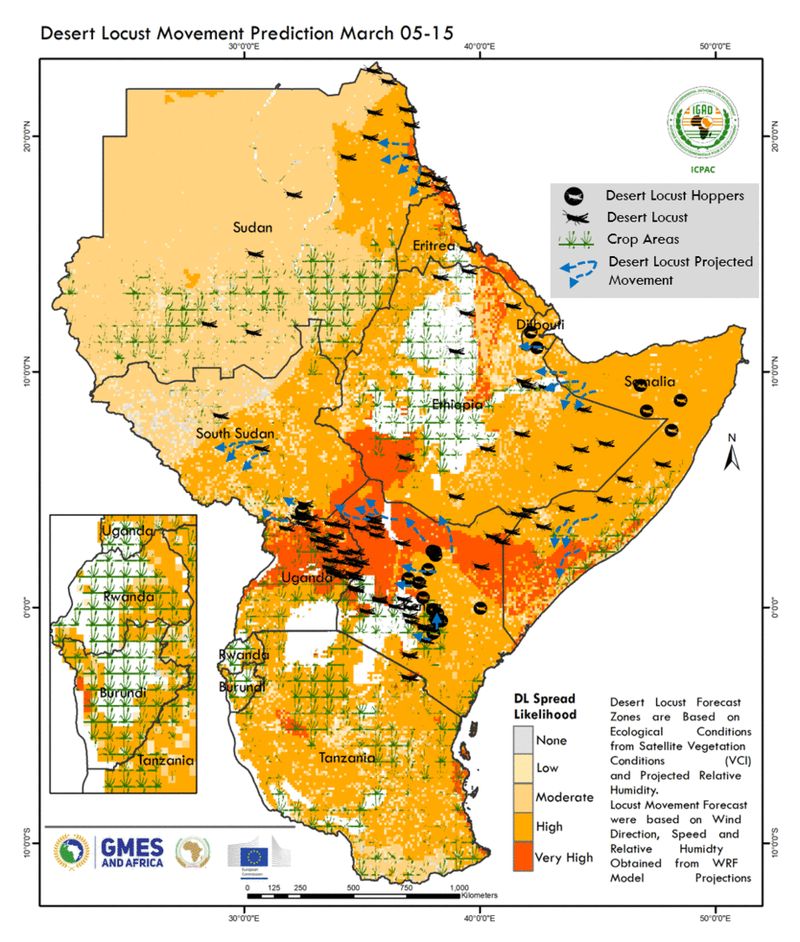Desert Locust Prediction 5-15 March
Areas of very high risk for Desert Locust invasion are southern Somalia, northern and western Kenya, northern and central Uganda, southwestern Ethiopia and southeastern South Sudan.
Most of the region falls under high risk due to favourable forecasted temperatures and vegetation, suitable for Desert Locust reproduction and development.

- Highly suitable temperatures for development of Desert Locust hoppers in Djibouti, Kenya and South Sudan increasing the risk of them maturing into adult locusts if ground control is not done effectively. This is coupled with good vegetation that favors locust development due to off season rainfall during February. The highest risk areas are found in Kenya, southern South Sudan, eastern Uganda and southwestern Ethiopia due to favourable temperature and vegetation conditions.
- Forecasted wind speed and direction show a general northwesterly wind direction, with the exception of Somalia which has a southwesterly direction. Predicted locust movement is still mainly towards northwestern and western Kenya, southern South Sudan and southwest Ethiopia. Current infestation is highest in these sub-regions.
- High wind speeds risk taking the developing young adult locusts from Somaliland to northeast Ethiopia. Change in wind direction has stopped further southern invasion to Tanzania and southern Kenya.
Highlight of current most affected areas:
- 24 Districts in Uganda.
- 20 Counties in Kenya.
- Hoppers have been reported in about 6 counties in Kenya, 1 county in South Sudan, 3 locations in Somalia and 2 locations in Djibouti.
